Are you a fledgling hiker gearing up for your maiden adventure? I completely understand. Not so long ago, that was me – standing in the midst of an outdoor gear store, swamped with endless choices and battling uncertainty about what exactly to buy.
My love affair with nature and my accumulated years of trail-blazing have driven me to do some serious legwork on this topic – all to simplify things for you. This blog is a well-rounded guide that will arm you with vital hiking gear pointers and prudent hacks that could be nothing short of lifesavers! So strap on your boots and set your sights on the horizon as we start this exciting journey into the heart of wilderness.
Key Takeaways
- Wear comfortable and weather-appropriate clothing, including layers made of fast-drying fabrics like nylon or polyester. Avoid cotton.
- Invest in a good pair of hiking boots/shoes that provide support and traction. Choose socks that fit well and dry quickly.
- Carry the Ten Essentials: map, compass, sunglasses/sunscreen, extra clothing, headlamp/flashlight, first-aid supplies, fire starter, knife, basic repair kit, and extra food/water.
- Start with shorter hikes to build confidence and gradually increase difficulty. Incorporate strength training and cardio exercises to improve hiking fitness.
- Stay hydrated by drinking enough water during your hike and replenishing electrolytes on longer hikes. Fuel up with carbohydrates before hitting the trail.
- Prioritize safety by having insurance coverage specifically for hiking trips. Respect the trail and wildlife.
The Basics of Hiking Gear
When it comes to hiking gear, there are a few essentials that every newbie hiker needs to have.
Hiking clothes
You need the right hiking clothes. They should be comfy and suited for the outdoors. Opt for layers you can add or drop as needed. Choose shirts, pants, and jackets made from fast-drying fabrics like nylon or polyester.
Avoid cotton because it takes too long to dry when wet. In colder weather, wear a base layer that wicks sweat off your skin. Over this, put an insulating layer to keep you warm. Lastly, use a waterproof layer to fend off rain or snow.
A good pair of leg gaiters is helpful too. It fits over your boots and pants giving extra cover against mud and scratches.
The idea here isn’t about getting expensive outdoor gear but wearing what works best in nature’s playgrounds while keeping within budget!
Hiking boots/shoes and socks
Choosing the right boots or shoes for hiking is key. They need to give good grip and support your feet well. Also, they must shield your feet from harm. Your socks play a big role too.
You should wear socks that fit just right with your hiking footwear. Thin or thick depends on what feels comfy to you. Woolen ones are often liked by hikers as they balance heat well.
Also, look for socks that dry fast to keep your feet dry during hikes.
Daypack
A daypack is a must-have for your outdoor adventure. It keeps all your gear and supplies close by. You can fill it with maps, compasses, first-aid items, and fire starters. The size of the pack should not be too big or heavy.
It should only hold what you need for a day’s hike. A good daypack helps you enjoy trail hiking without worry.
Weather considerations
When planning a hiking trip, it’s important to consider the weather conditions you might encounter along the way. Certain items are almost essential for hiking in wet weather, such as a waterproof jacket and pants, waterproof boots or shoes, and a rain cover for your backpack.
These will help keep you dry and comfortable even if it starts raining during your hike.
If you’re planning to hike in cold weather, it’s crucial to dress appropriately to prevent injuries and illnesses. Layering is key – wear moisture-wicking base layers, insulating mid-layers like fleece or down jackets, and a windproof outer layer.
Don’t forget gloves, hats, scarves, and warm socks to protect your extremities from the cold.
Remember that proper clothing and gear are especially important for beginners going on their first hike. Being prepared for different weather conditions will make your experience more enjoyable and ensure your safety on the trail.
Essential Gear Checklist
Now that you know the basics of hiking gear, it’s time to create your essential gear checklist. Don’t forget to check out our recommendations for additional gear! Ready to dive in? Read more..
The 10 essentials
Let’s talk about the 10 essentials for hiking and camping. These are the things you should always have with you when you’re out on the trails.
- Map: Make sure you have a map of the area you’ll be hiking in. It’s important to know where you’re going and how to get back.
- Compass: A compass is essential for navigation. It will help you find your way even if you don’t have cell phone service or a GPS device.
- Sunglasses and Sunscreen: Protect your eyes and skin from the sun’s harmful rays by wearing sunglasses and applying sunscreen regularly.
- Extra Clothing: Weather can change quickly, so it’s smart to pack extra clothing layers in case it gets cold or wet.
- Headlamp/Flashlight: A headlamp or flashlight is crucial for seeing in low-light conditions or emergencies.
- First-Aid Supplies: Accidents happen, so always carry a first-aid kit with bandages, antiseptic wipes, and any necessary medication.
- Fire Starter: Having a fire starter like waterproof matches or a lighter can be essential for warmth, cooking food, or signaling for help.
- Knife: A knife can be useful for cutting rope, preparing food, or other tasks that may arise during your hike.
- Basic Repair Kit: It’s always good to have some basic repair materials handy, such as duct tape or safety pins, in case gear starts to fall apart.
- Extra Food and Water: Pack extra snacks and water in case your trip takes longer than expected or if there are no reliable water sources along the way.
Additional gear recommendations
Here are some additional gear recommendations for your hiking adventure:
- Eye protection: Sunglasses or goggles can shield your eyes from the sun’s glare and prevent debris from getting into your eyes on the trail.
- Sun protection: Don’t forget to wear sunscreen with a high SPF to protect your skin from harmful UV rays. A wide-brimmed hat is also useful for shielding your face and neck.
- Extra clothing layers: Depending on the weather, it’s a good idea to bring extra clothing layers like a lightweight jacket or a raincoat in case the temperature drops or it starts raining.
- Illumination device: Carry a headlamp or flashlight with extra batteries. This will come in handy if you end up hiking past sunset or in low-light conditions.
- First aid supplies: A basic first aid kit should include band-aids, adhesive tape, gauze pads, antiseptic wipes, and any necessary personal medications for emergencies.
- Firestarting equipment: Pack waterproof matches or a lighter so you can start a fire if needed for warmth, cooking food, or signaling for help.
- Multipurpose tool: A multi-tool with pliers, a knife, scissors, and other helpful tools can be essential in various situations during your hike.
- Daypack or backpack: Invest in a comfortable daypack or backpack that fits your body well and has enough space to carry all of your essentials comfortably.
Guide to Essential Hiking Gear for Newbies
As a newbie hiker, it’s important to have the right gear for a successful and enjoyable experience. Here is a guide to essential hiking gear that you’ll need on your adventures. First, let’s talk about clothing.
Wear comfortable and moisture-wicking clothes that are suitable for the weather. Don’t forget to layer up if it’s chilly.
Next, let’s focus on footwear. Invest in a good pair of hiking boots or shoes that provide support and traction. Don’t forget to wear moisture-wicking socks to keep your feet dry and prevent blisters.
You’ll also need a daypack to carry all your essentials like water, snacks, sunscreen, and extra clothing layers. Look for one with adjustable straps and compartments for easy organization.
Now let’s move on to weather considerations. Always check the forecast before heading out and pack accordingly. Bring rain gear or sun protection depending on the conditions.
In conclusion, having the right hiking gear is crucial as a newbie hiker. From clothing to footwear and other essential items like a daypack, being prepared will ensure a safe and enjoyable hike.
How to Build Up Hiking Fitness
To build up your hiking fitness, start by considering your current level of fitness and gradually increase the difficulty and length of your hikes over time. Hydration and nutrition are also important factors to keep in mind as you work on improving your hiking endurance.
Fitness considerations
To be successful at hiking, it’s important to consider your fitness level. Hiking requires strength, endurance, and balance. So before hitting the trails, it’s a good idea to train and prepare your body for the physical demands of hiking.
One way to build up your hiking fitness is through strength-training exercises. These exercises can help strengthen the muscles that you’ll be using while hiking, such as your legs and core.
Simple exercises like squats, lunges, and planks can make a big difference in your hiking abilities.
In addition to strength training, cardio exercises are also important for hiking fitness. Activities like walking or jogging on a treadmill or using an elliptical machine can improve cardiovascular endurance and stamina.
By incorporating these exercises into your routine, you’ll have more energy and be better prepared for those uphill climbs on the trail.
Starting with shorter hikes
Starting with shorter hikes is a great way to build confidence and improve your chances of success.
Hydration and nutrition
Proper hydration and nutrition are essential for a successful hiking experience. Water is crucial as our bodies are mostly made up of water, including our muscles. It’s important to drink enough fluids during the hike to maintain fluid balance.
Aim to drink 16 to 20 ounces of water or sports drinks every hour for a few hours after your hike to fully rehydrate. Also, don’t forget about electrolyte replacement, especially on longer hikes, as sweating can cause an imbalance.
As for nutrition, fueling with carbohydrates is vital for backpackers. Before your hike, make sure you have a pre-hike meal rich in carbs and avoid alcohol since it can lead to dehydration.
Hiking Safety
When it comes to hiking safety, there are a few important factors to consider.
Importance of insurance
Insurance is really important when it comes to hiking. It helps protect us from accidents, injuries, and emergencies. Regular travel insurance might not cover everything we need, so getting specific hiking insurance is a smart choice.
It can also cover the cost of our gear like boots, backpacks, and clothes. If you’re part of a hiking club or organization, they may require you to have insurance because they’re responsible for keeping everyone safe during hikes.
So having insurance gives us peace of mind while enjoying the great outdoors.
Navigation and maps
As a hiking enthusiast, I understand the importance of navigation and maps when exploring the great outdoors. Having the right skills and tools can make your hiking experience safer and more enjoyable.
Whether you’re a beginner or an experienced hiker, it’s crucial to know how to read a map and navigate using essential techniques. You can use landmarks, topography, and trail markers as reference points along your journey.
If you want to take it up a notch, consider learning compass navigation or utilizing GPS tracking with apps like GAIA GPS. These skills will not only keep you on track but also help you discover new trails and hidden gems in nature.
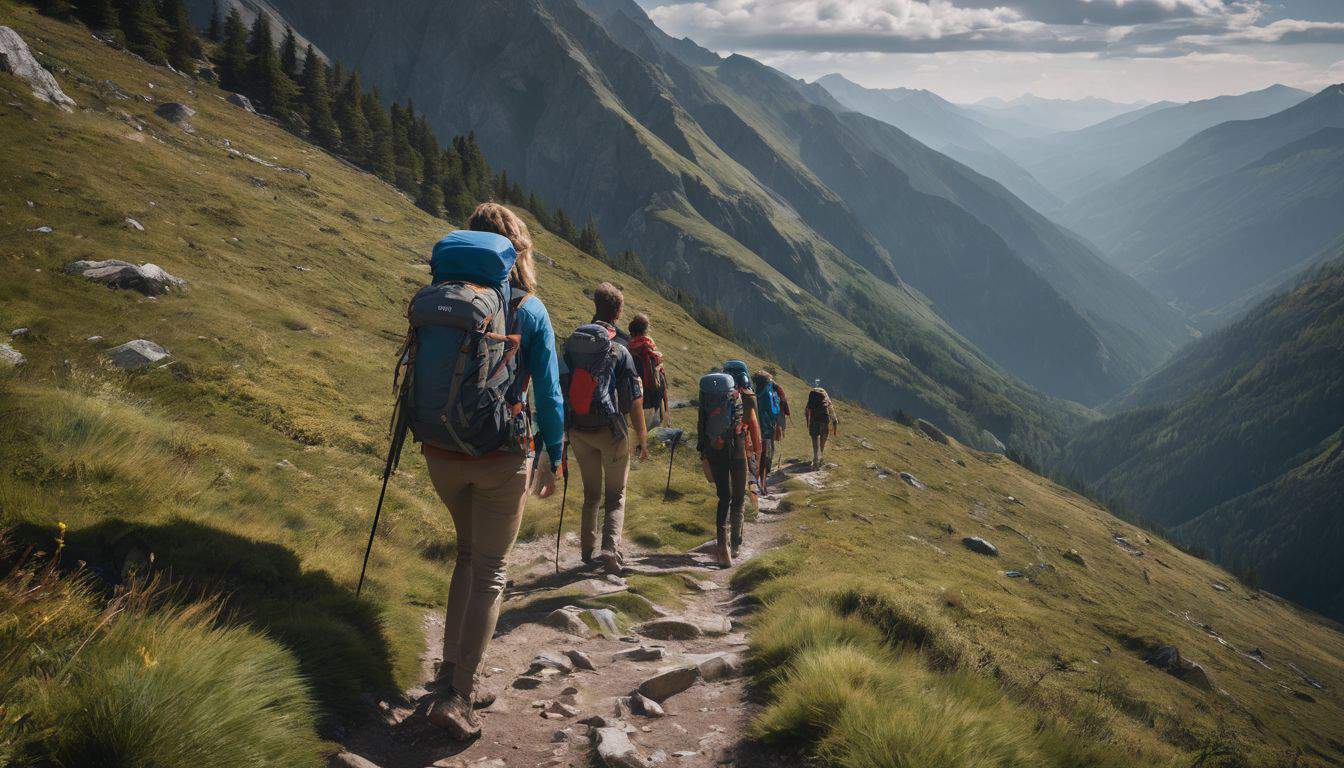
Staying hydrated and nourished
Staying hydrated and nourished is essential for a safe and enjoyable hiking experience. Here are some important things to keep in mind:
- Drink plenty of water before you hit the trail to prevent dehydration.
- Carry enough water with you on your hike, and make sure it is easily accessible.
- Avoid drinking alcohol before or during your hike, as it can lead to dehydration.
- Pack nutritious snacks and meals to keep your energy levels up while hiking.
- Be mindful of the weather conditions and adjust your hydration and nutrition accordingly.
- Recognize the signs of dehydration, such as feeling thirsty, having dry mouth or lips, or having dark-colored urine.
- On the other hand, be aware of the risks of overhydration as well, which can cause hyponatremia (low sodium levels).
- Stay hydrated even in cooler temperatures, as you may still lose fluids through sweating.
Trail etiquette and leaving no trace
I believe that trail etiquette and leaving no trace are important aspects of responsible hiking. As a hiking enthusiast, I always make sure to follow these guidelines to preserve the beauty of nature and ensure a positive experience for others on the trail. Here are some key principles to keep in mind:
- Be respectful of nature: Stay on designated trails and avoid disturbing rocks, vegetation, or wildlife. Remember, we are guests in their home.
- Pack it in, pack it out: Carry all trash and belongings with you and dispose of them properly when you leave the trail. Leave no trace behind.
- Minimize your impact: Avoid making unnecessary noise or disrupting the peace and tranquility of the surroundings. Be considerate of others who might be enjoying the hike as well.
- Practice proper trail maintenance: If you come across any fallen branches or debris on the trail, consider removing it if it’s safe to do so. Leave the trail better than you found it.
- Follow wilderness ethics: Respect any regulations or guidelines specific to the area you are hiking in, such as camping restrictions or fire regulations. These rules are in place to protect the environment.
- Give way to others: Yield to hikers going uphill, as they have the right of way. Step aside and allow faster hikers or horses to pass safely.
- Preserve natural resources: Refrain from picking flowers, disturbing wildlife, or damaging any natural features you encounter during your hike.
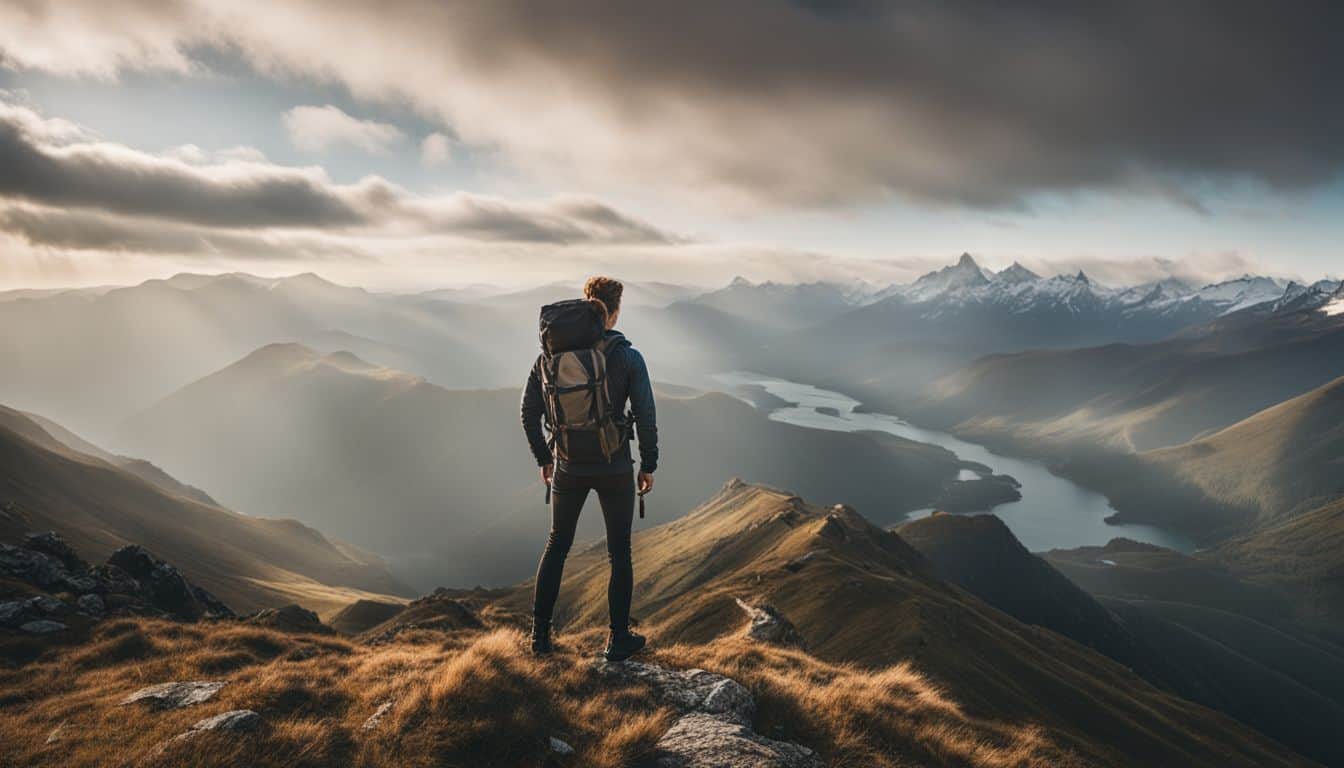
Tips for Hiking Mastery
Research and plan your hikes ahead of time, starting early in the day to maximize daylight hours and avoid crowds, while also knowing your fitness level and choosing appropriate trails for your skill level.
Researching and planning hikes
When it comes to hiking, researching and planning your hikes is essential. Here are some tips to help you get started:
- Check the trail conditions: Before heading out, make sure to check the trail conditions. Look for any closures or warnings due to weather conditions or maintenance work.
- Read reviews and trail reports: Reading reviews and trail reports from other hikers can give you valuable insights and help you choose the right hike for your skill level.
- Consider the difficulty level: Take into account the difficulty level of the hike when planning. Look for information on elevation gain, terrain, and distance to ensure it matches your fitness level.
- Know the rules and regulations: Familiarize yourself with any rules and regulations specific to the area you’ll be hiking in. This includes permits, parking fees, and any restrictions on camping or campfires.
- Pack appropriately: Based on the duration of your hike, consider what gear and supplies you’ll need to bring along. This includes essentials like water, food, navigation tools (map and compass), first aid kit, extra clothing layers, and a headlamp.
- Check for any special considerations: Some trails may have specific considerations such as seasonal closures or wildlife activity that might impact your hike. Make sure to research these beforehand.
Starting early in the day
I love starting my hikes early in the day. It’s a great way to make the most of daylight hours and ensure I don’t end up hiking in the dark. Plus, by hitting the trail in the morning, I can take advantage of cooler temperatures and avoid the heat that comes later in the day, especially if I’m hiking in a hot and sunny climate.
Another benefit is that trails are usually less crowded in the mornings, so I get to enjoy more solitude and have a peaceful experience on the trail. There’s something magical about witnessing sunrise views and experiencing the natural beauty of the trail bathed in early morning light.
And let’s not forget that starting early gives me plenty of time to enjoy my hike at a leisurely pace, take breaks whenever needed, and truly savor every moment without feeling rushed.
Knowing your fitness level
Understanding your fitness level is crucial when it comes to hiking. It helps you select appropriate trails and plan your hikes accordingly. By assessing your fitness capabilities, you can determine the needed gear and equipment for a safe and enjoyable experience.
Starting training in advance will prepare your body for the physical challenges of hiking, while consuming a nutritious diet before a hike will help maintain energy levels and prevent exhaustion.
So take the time to assess your fitness level and make sure you’re ready for the adventure ahead!
Choosing appropriate trails
When it comes to choosing hiking trails, it’s important for beginners like us to do some research before hitting the trail. We need to consider factors like our fitness level and experience, as well as the difficulty level of the trail.
It’s a good idea to start with easier trails and gradually progress to more challenging ones as we gain confidence and experience. There are guide books, websites, and local hiking communities that can help us find suitable beginner-friendly trails.
We should also check the seasonal conditions and make sure the trail is safe and open for hiking. By choosing appropriate trails that match our capabilities, we can have an enjoyable and safe hiking experience.
Respecting the environment and wildlife
Respecting the environment and wildlife is crucial when hiking. As a hiker, it’s important to be mindful of the impact we have on nature. Remember, we are guests in their home. To preserve wildlife habitats and minimize disturbance, stay on designated trails and avoid straying off into sensitive areas.
Keep a safe distance from wildlife encounters to ensure both your safety and theirs. Also, remember to follow proper hiking etiquette by leaving no trace behind – pack out your trash, respect the surroundings, and leave everything as you found it.
By practicing responsible hiking, we can help protect our beautiful natural spaces for future generations to enjoy.
Common FAQs about Hiking
What is the average number of miles hikers cover in a day? Do you need a hiking guide to navigate trails? How much does hiking cost?
Miles per day
When it comes to hiking, the number of miles you can cover in a day depends on various factors. Factors like trail difficulty, your fitness level, and the terrain can all play a role.
As a beginner, it’s recommended to start with shorter hikes of around 3-5 miles per day. Gradually increase the distance as your fitness improves. Experienced hikers can cover longer distances of 10-15 miles per day or even more if they’re up for it.
It’s important to listen to your body and avoid overexertion to prevent injuries. The pace at which you hike and whether you have a hiking partner or group can also affect how many miles you’ll be able to cover in a day.
Need for a hiking guide
As a beginner hiker, it’s important to have a hiking guide to help you along the way. A guide can provide valuable information and expertise about the trails, terrain, and safety precautions.
They can also answer any questions you may have and offer tips for a successful hike. Additionally, a hiking guide can ensure that you are well-prepared with the right gear and supplies, making your hiking experience safer and more enjoyable.
Remember, having someone experienced by your side can give you peace of mind as you navigate through unfamiliar trails and make lasting memories in nature.
Cost of hiking
Hiking can be an affordable outdoor activity, but it’s important to consider the costs involved. You’ll need to budget for hiking gear, such as hiking clothes, boots or shoes, and a daypack.
Additionally, there may be fees for park entrance or camping permits. Don’t forget to factor in transportation costs if you’re traveling to hiking destinations. It’s a good idea to plan ahead and research any expenses you might encounter along the way.
By being prepared and budgeting wisely, you can enjoy the wonders of nature without breaking the bank.
Conclusion on Essential Hiking Gear For Newbies
In conclusion, mastering essential hiking gear for newbies doesn’t have to be daunting. By following these three secret tips – wearing appropriate clothes, investing in comfortable boots and socks, and packing the Ten Essentials – beginners can confidently embark on their hiking journey.
Remember to start with shorter hikes, stay hydrated, and respect the trail and wildlife. With the right gear and a bit of practice, you’ll soon become a hiking expert!
FAQs on Essential Hiking Gear For Newbies
1. What gear do I need for hiking as a newbie?
As a newbie hiker, you’ll need essential gear such as proper footwear, comfortable clothing, a backpack, water bottle, and navigation tools like a map or compass.
2. How much does hiking gear cost for beginners?
The cost of hiking gear for beginners can vary depending on the brand and quality of the equipment. However, it is possible to find affordable options that meet your needs.
3. Are there any secret tips to master hiking?
Yes! Three secret tips for mastering hiking are: starting with shorter hikes and gradually increasing difficulty level; learning basic outdoor skills like reading maps and understanding weather conditions; and practicing Leave No Trace principles to minimize environmental impact.
4. Can I hike without specialized training or experience?
While specialized training or extensive experience is not required for every hike, it is important to be prepared by researching the trail beforehand, wearing appropriate clothing and footwear, carrying necessary supplies like water and snacks, and using caution during outdoor activities.
5. Is hiking suitable for people of all ages?
Hiking can be enjoyed by people of all ages as long as they are physically capable. It’s important to choose trails that match individual fitness levels and consult with healthcare professionals if there are any concerns about specific health conditions before engaging in rigorous physical activity.

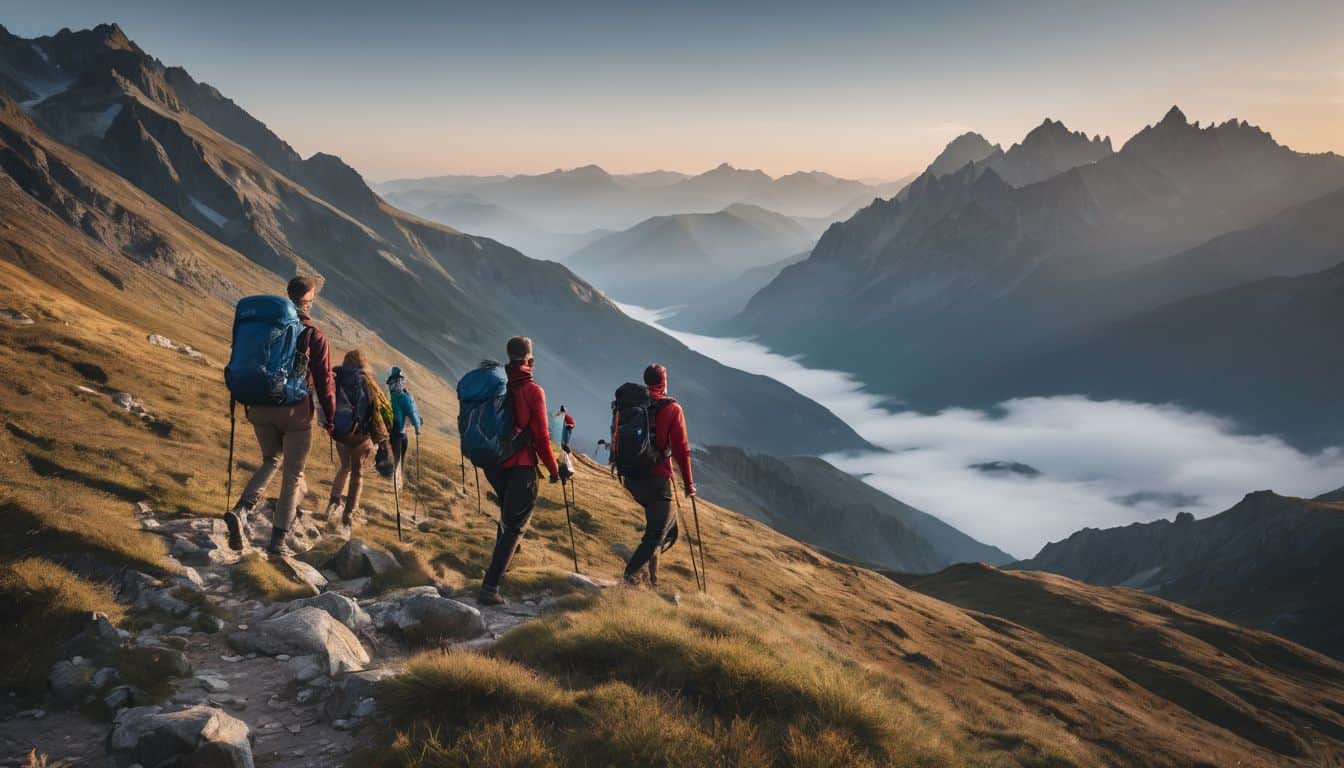
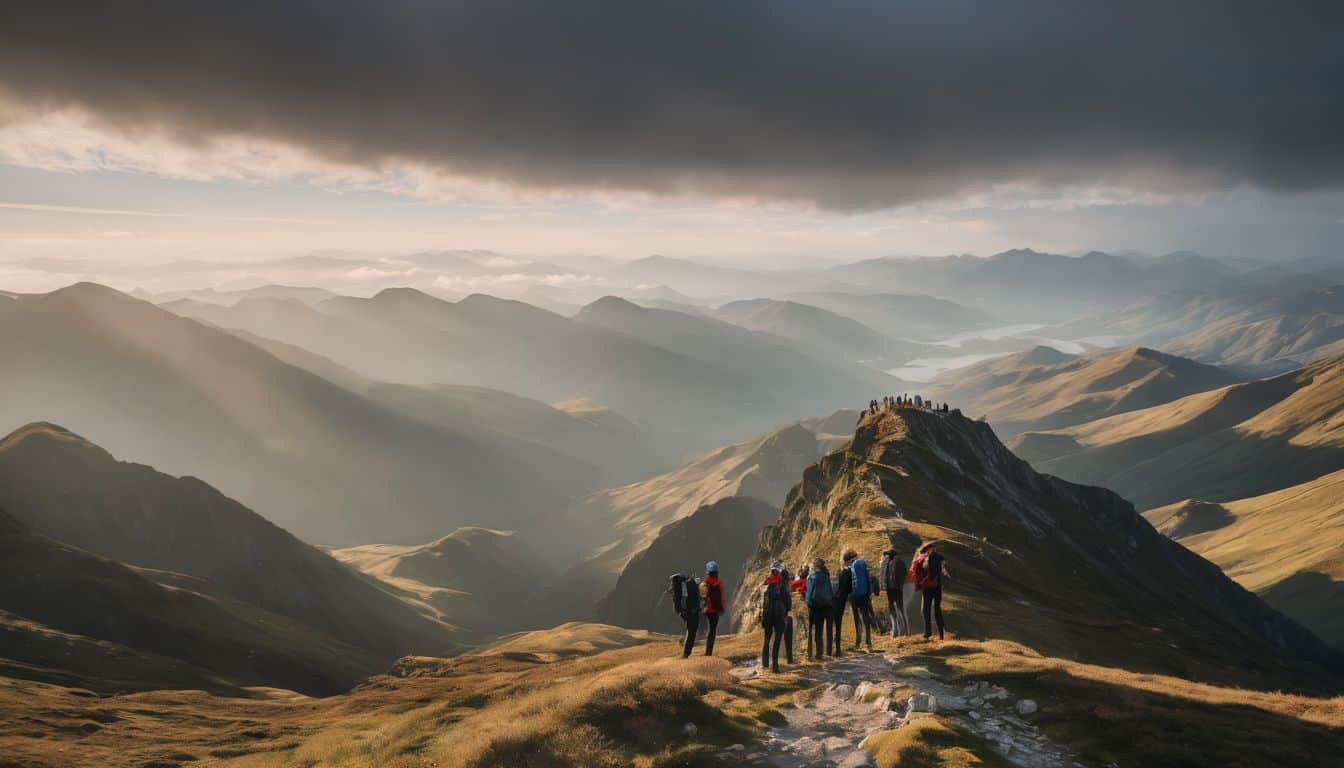
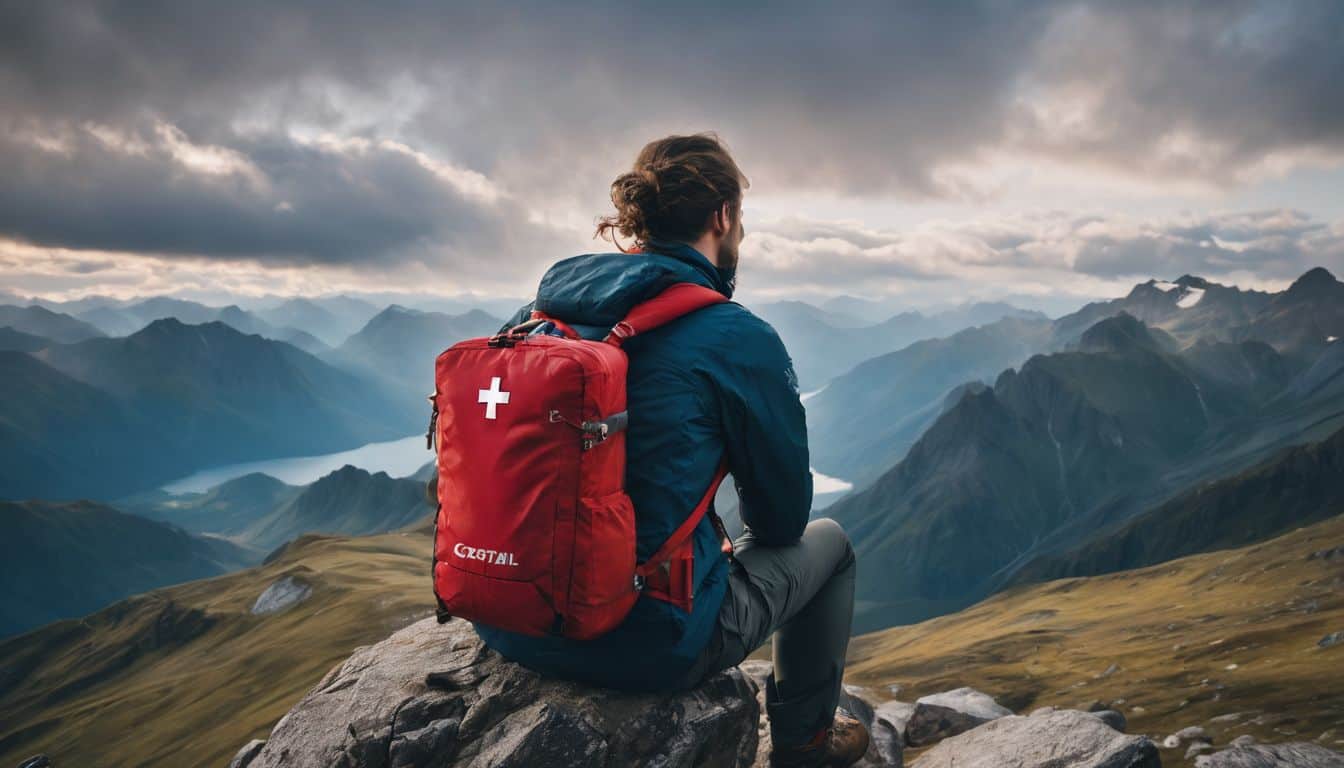
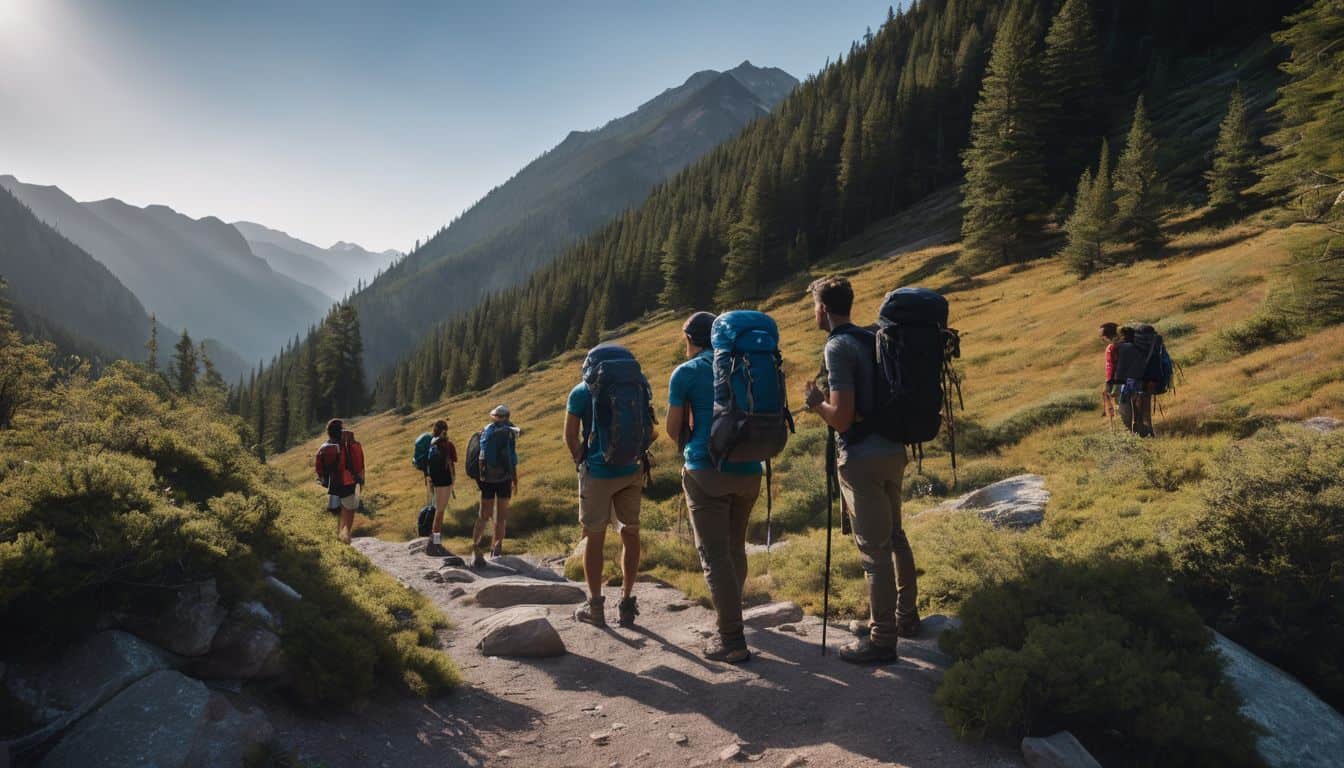
Leave a Reply